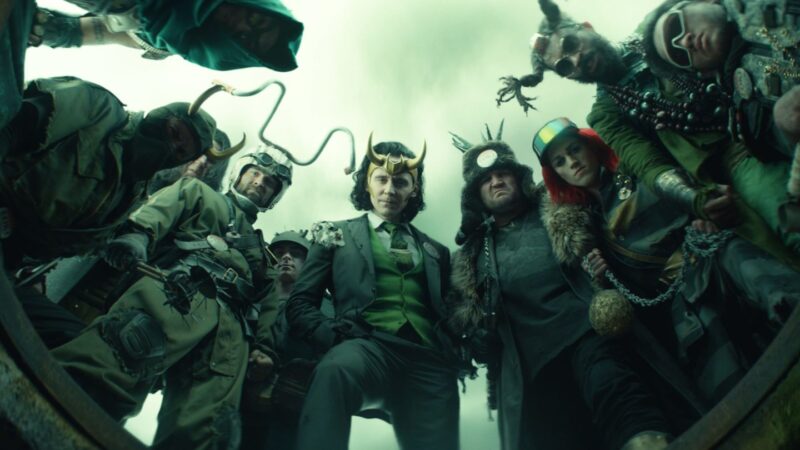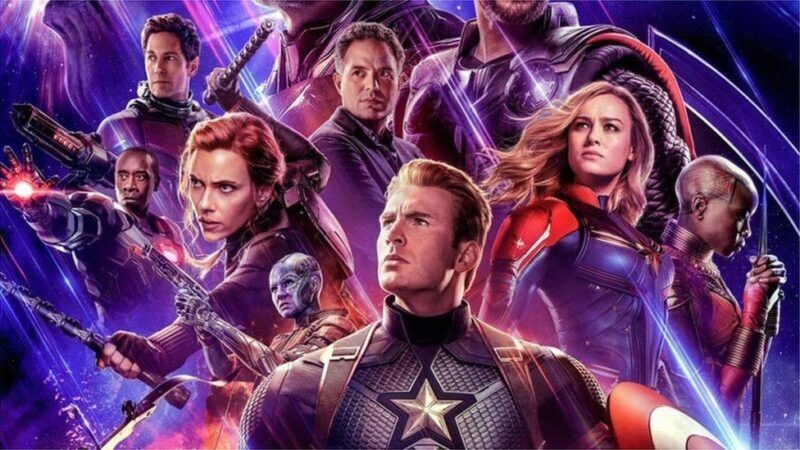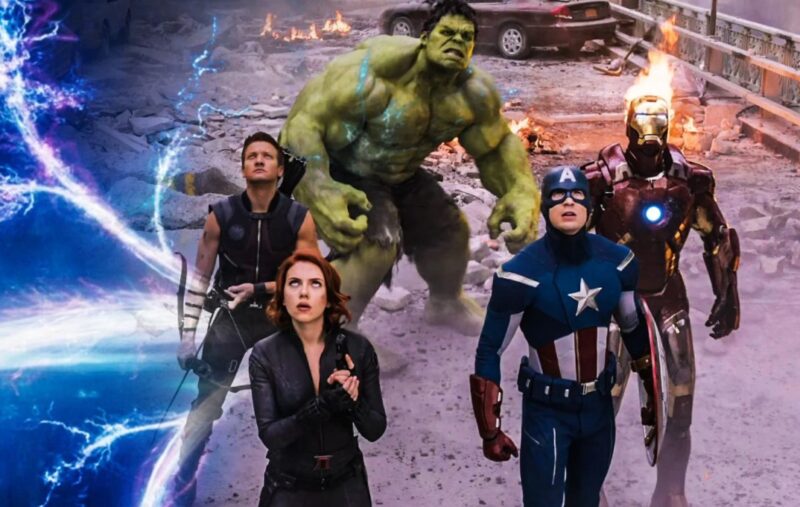Marvel is the master of world building and its multiverse has been a favorite among fans for decades. The MCU has given us some of the best movies in recent memory, but it’s also created a confusing mess that can be difficult to keep track of.
The marvel multiverse map is a graphic that shows all of the different universes and timelines in the Marvel Cinematic Universe.
There was just one storyline and one fictitious world when mainstream American comic books first appeared in the early twentieth century. This went on for decades, until eventually, publishers started to feed us so-called alternate tales, giving rise to the Multiverse idea.
The Multiverse is a wider fictional world in which many other realities, often referred to as “Earths,” coexist with one main, canon narrative setting; in Marvel’s instance, Earth-616. This allowed for more varied storytelling and a continuous growth of fictitious stories.
The Multiverse may seem to be a tough idea to grasp, yet this is deceptive. We’ll walk you through everything step by step, and before you know it, you’ll be an expert in the subject. We’ll also go over how the MCU world fits into the overall scheme.
What is Marvel’s Multiverse, and how does it work?
Most stories in Marvel Comics’ narrative world take place in the vast fictitious Marvel Universe, which is itself a part of a larger fictional Multiverse. The primary timeline (the so-called “Prime Earth”) in which most Marvel tales take place was designated as Earth-616 beginning with the first issues of Captain Britain, and so the Multiverse was established as being safeguarded by Merlyn.
This was in 1976, but the idea has been mentioned in passing as early as The Avengers #85. (February 1971). [1]
The idea succeeded, and each world now has its own Captain Britain, who is tasked with defending the British Isles. The Captain Britain Corps is the collective name for these guardians, and they symbolize the Multiverse’s first development stage.
This number system of the various Earths gained popularity and was maintained in the Excalibur series and other games before spreading to the core titles.
At almost every point in Marvel’s Multiverse history, each alternate universe had its own Sorcerer Supreme, always appointed by the mystical trinity of Vishanti to protect the world from threats of primarily magical nature from within and beyond, and always wielding the Eye of Agamotto, the Sorcerer Supreme’s most powerful weapon.
Many authors would later utilize and alter the Multiverse in other series, with Exiles, X-Men, and the Ultimate Fantastic Four being prominent examples; the Ultimate Marvel Universe is particularly remarkable in this regard.
Stories featuring time-traveling characters like Rachel Summers, Cable, and Bishop would also create new worlds when their actions caused their genesis periods to shift.
Within Marvel, how many worlds are there?

The Marvel Multiverse, unlike DC’s Multiverse, allows for an unlimited number of other Earths since it is not restricted in any manner. Although the actual number of other Earths is unclear, the following is a list of some of the most well-known:
| Earth | Debut | Information |
|---|---|---|
| Earth-616 | Weekly Motion Picture Jokes #1 (1939) | The Marvel Universe’s primary setting. |
| Earth-1610 | Spider-Man: Ultimate Edition #1 (2000) | The Ultimate Marvel Universe is a modern-day reimagining of the Marvel Universe, which began with Ultimate Spider-Man and Ultimate X-Men. |
| Earth-199999 | Iron Man is a fictional character created by Stan Lee (May 2, 2008) | The MCU (Marvel Cinematic Universe) timeline. |
| Earth-10005 | The X-Men are a fictional superhero team created by Stan Lee and (July 12, 2000) | Until the events of X-Men: Days of Future Past, the original setting of the X-Men film series. |
| Earth-92131 | (Part 1) Night of the Sentinels (Oct. 31, 1992) | The early 1990s setting of X-Men: The Animated Series, Spider-Man: The Animated Series, and (maybe) other animated programs. |
| Earth-12041 | Great Responsibility and Great Power (April 1, 2012) | The animated series’ universe, as seen on Disney XD. |
| Earth-17628 | Guardians of the Galaxy #1 (Marvel Universe) (February 2015) | Marvel’s Guardians of the Galaxy, Marvel’s Spider-Man, and Avengers: Black Panther’s Quest (Season 5 of Avengers Assemble) are all based on true events. |
| Earth-8096 | The X-Men and Wolverine (January 23, 2009) | Wolverine & the X-Men, Avengers: Earth’s Mightiest Heroes, Hulk Vs., and Thor: Tales of Asgard all take place in this world. |
| Earth-10022 | Hulk’s home planet (February 2, 2010) | The universe in which the Planet Hulk movie is set. |
| Earth-65 | Spider-Man: Into the Spider-Verse #2 (Nov. 2014) | Spider-home Woman’s world (Gwen Stacy). |
| Earth-67 | Dr. Octopus’s Influence (Sept 9, 1967) | The setting for the 1967 Spider-Man television series. |
| Earth-9907 | Avengers: The Next Chapter #10 (July 1999) | In an alternative universe, the Red Skull survives his last fight with Captain America and leads the Third Reich to complete global dominance. |
| Earth-8311 | #1 of Marvel Tails (1983) | Peter Porker, the Spectacular Spider-Ham, and a variety of clever, talking, anthropomorphic humorous animal parodies of Marvel characters call the Larval Universe home. |
| Earth-928 | #1 of Spider-Man 2099 (1992) | Earth-616’s alternative future, set around 2099. |
| Earth-982 | #105 in What If? (vol. 2) (1998) | MC2’s configuration. |
| Earth-2149 | #21 of the Ultimate Fantastic Four (2005) | The original Marvel Zombies series was based on reality. |
| Earth-712 | (February–March 1971) Avengers #85–86 | The Squadron Supreme’s home universe. |
| Earth-58163 | M’s House (June–November 2005) | Wanda Maximoff constructed an alternative version of Earth-616. |
| Earth-1287 | Morituri #01 (Strikeforce) (1986) | In the year 2072, a scientist called Dr. Kimmo Tuolema develops a technique that may provide mankind superhuman abilities in order to combat a raging extraterrestrial invasion that began in 2069. |
| Earth-88194 | Dr. Zero No. 1 (1988) | Shadowline’s environment. |
| Earth-811 | #141 of Uncanny X-Men (1981) | Days of Future Past’s setting. |
| Earth-45828 | The First Cut #1 of Razorline (Sept. 1993) | Clive Barker’s Razorline imprint’s setting. |
| Earth-148611 | Star Brand No. 1 (Oct. 1986) | The New Universe’s location. |
| Earth-807128 | #66 Wolverine (vol. 3) (Aug. 2008) | The scene in which Old Man Logan takes place. |
| Earth-90214 | Spider-Man Noir #1 is the first issue of Spider-Man Noir (Feb. 2009) | Marvel Noir is set in a 1920s–1930s world with few superhumans who have acquired abilities. |
| Earth-31117 | Captain America #17-20 (2003–2004) is a comic book published by Marvel Comics. | An alternative timeline in which Nazi Germany wins World War II due to an unexplained timestream disruption. |
| Earth-1218 | #137 of Marvel Team-Up (Jan. 1984) | Our world, in which superheroes and supervillains only exist as fictitious figures in popular culture and mainstream media. |
| Earth-98140 | #1 of the Alien Legion (April 1984) | The Alien Legion’s main setting. |
| Earth-9997 | #0 Earth X (Jan. 1999) | The Earth X setting. |
| Earth-7642 | The Amazing Spider-Man vs. Superman #1 (Jan. 1976) | In a parallel universe, Marvel and DC characters coexist. |
| Earth-93060 | Hardcase No. 1 (June 1993) | The Ultraverse’s main setting. |
| Earth-8116 | #1 in the Epic Illustrated series (March 1980) | The world of Dreadstar. |
| Earth-13122 | Marvel Super Heroes Lego (22 October 2013) | The primary setting of the Lego Marvel videogames is known as the Marvel Legoverse. Lego Marvel Super Heroes, Lego Marvel’s Avengers, and Lego Marvel Super Heroes 2 are all Lego Marvel Super Heroes franchises. |
| Earth-1048 | Spider-Man (video game, 2018) (Sept. 7 2018) | The primary environment of Insomniac’s Marvel PlayStation games is known as the Gameverse. |
| Earth-2301 | New Dawn in the Marvel Mangaverse (March 2002) | An adaptation of Marvel characters using a manga style and aesthetic, often known as the Mangaverse. |
| Earth-30847 | Street Fighter vs. X-Men (1996) | The Marvel vs. Capcom video game series’ main setting. |
| Earth-295 | Alpha is the first installment of the X-Men franchise (January 1995) | Also known as the Apocalypse Age. |
| Earth-1226 | M.O.D.O.K. is an abbreviation for “M.O.D.O.K (May 2024) | The location of the M.O.D.O.K. television series. It doesn’t happen in the Marvel Cinematic Universe. |
What role does the MCU have in Marvel’s Multiverse?

When Iron Man first debuted on film, the issue of how the MCU would fit into the Multiverse emerged. And, despite the fact that many people believed it was impossible, the MCU has already been incorporated into the Multiverse.
In particular, the MCU’s reality has been retrospectively renamed Earth-199999 and has been included into the wider Multiverse as a secondary Earth to the main Earth-616. This formally makes the MCU a part of the broader Multiversal canon.
The Marvel Multiverse of Madness is a term used to describe the many universes that are part of the Marvel Cinematic Universe.
Frequently Asked Questions
How does the multiverse work in MCU?
The multiverse is a term that refers to the many universes that exist in the Marvel Cinematic Universe. Each universe has its own set of rules, which can lead to conflicts between different universes.
Does the multiverse exist in the MCU?
I dont know what the multiverse is.
Is the MCU Earth 616 or 199999?
The MCU is Earth 616.



